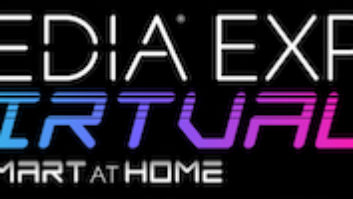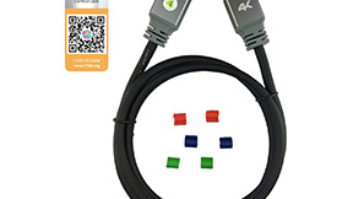Ten years ago, Progressive Networks started “streaming” audio across the Internet and got people thinking about how the Internet might eventually be used to deliver radio and TV programming.
Progressive is now RealNetworks, and video on the Internet is an exploding phenomenon. The “Mentos and Diet Coke” video drew millions of viewers, and prompted Google to acquire YouTube for $1.6 billion. Every television network now has an online approach, and hit TV shows are available for viewing the morning after they air on TV. But what are the implications for the consumer electronics industry?
Before we look at what IPTV means for the CE market, let’s define some terms and set the stage for the discussion.
Internet TV, IPTV, video on the Internet, TelcoTV and other terms are being used to describe television programs that can be obtained through a broadband Internet connection. In-Stat is defining 10 variations of IPTV to help make sense of all these terms.
We list the pay-TV services first, and include cellphone services, such as V-Cast and MobiTV, as pay-TV. We’ve defined broadcast TV and video-on-demand (VOD) as programs from traditional TV sources, which provide copyrighted materials. Pay-TV services provide a “walled garden” of video for which subscribers pay monthly usage fees, from which the content owners get paid license fees. On the Internet, the broadcast TV and VOD rights owners provide their video for “free” but embed advertising so they can make money from their copyrighted materials.
We’ve defined video as user-generated content because the individual creators own the rights, and they can be very flexible about how their video gets viewed. We list four types of TV (broadcast TV content) and video (user-generated content) that are being made available for free on the Internet, but you still need to pay for a broadband connection, so the ISP gets some money.
Corporate video services and broadcast TV production services control their content, but are free to make it available however they see fit. If you visit any major corporations’ Web sites, you’ll see videos of speeches made by their CEOs and other executives. Most local broadcast TV stations also post videos from their news on their Web sites.
The prevailing wisdom has been that the pay-TV services do a much better job of delivering true high-definition video experiences, but we are beginning to see that emerging Internet-delivered options will, in time, be able to deliver video products that look pretty darned good, even on a 1,080p plasma display.
People who have figured out how to connect their personal computers to their TV sets are creating an entire second “wave” of Internet and broadband video formats. The online portals that provide TV shows, movies, and user-generated content are now creating three versions of their content. They offer a low-resolution version suitable for viewing on a cellphone or portable media player, and a medium-resolution version of their video optimized for viewing in a window on a computer screen. They are beginning to offer a third, higher-resolution, version that is intended for full-screen viewing on a big-screen TV. There is even a Web site offering technical specifications for high-definition video delivered via the public internet: www.ihd.org.
The 10th option is the “wild card” — it’s a combination of Internet TV and Internet video that can be streamed or downloaded to any kind of device. Verizon’s V-Cast has already signed a deal with YouTube to make some user-generated content available on the V-Cast service, which is primarily a pay-TV service offering sports and TV clips from major broadcasters. You can see where this is going. Anyone with a mobile service that can access the Internet can now watch TV programs from ABC, CBS, NBC, and Fox, as well as “snack” on short video clips from YouTube, MySpace and wherever else they can find suitable Content.
The wild card option is expected to continue proliferating new formats for video quality, and create new options for getting broadcast TV, VOD and user-generated content across all “five screens” of a consumers’ experience. The “five screens” include:
- High-definition video displays.
- Standard-definition video displays.
- Laptop and desktop computer displays.
- Cellphones and portable media player displays.
- Displays in vehicles for in-car entertainment and GPS.
At International CES show you will see examples of all five of these displays, along with a bewildering array of services, packages and online resources all being developed diligently to make sure that consumers find their Web site, or their mobile phone storefront, and experience their video products.
For the major manufacturers of widescreen, high-definition TV sets and HDTV monitors, there are going to be some disruptions and some key new opportunities.
One of the biggest disruptions so far has been the extremely disappointing uptake for digital-cable-ready (DCR) products. Very few CableCARDs have been issued to permit cost-conscious consumers to enjoy the full benefits of their widescreen, DCR HDTV sets. Since the pay-TV industry has not been “CE friendly,” CE manufacturers are finding other ways to create additional value for their big, beautiful TV sets.
In Japan, a consortium made up of Matsushita (Panasonic), Sony, Sharp, Toshiba and Hitachi is working on the development of Internet-ready TV products. Rather than waiting for those in the pay-TV industry to “open their kimono,” these world-class CE companies are taking the bull by the horns, and adding Ethernet, and other in-home network interfaces to off-the-shelf HDTV sets. This will make it possible for an HDTV set to connect using the broadband Internet service that may already be available in a consumer’s domicile. But, as commentator Paul Harvey says, there is a lot more to the “rest of the story.”
Not all Internet-ready TV sets will be connected to a broadband service that is capable of delivering true high-definition video, which requires at least 10Mbps, even using MPEG-4 Part 10 (H.264) compression. In Japan, and South Korea, broadband services provide up to 100Mbps, so some Internet-ready TV sets in these markets could actually bypass the pay-TV services, and sell high-definition videos directly from the member CE companies’ Web portals.
The consortium intends to develop and launch its own, in-country Web portal, and provide premium streaming video and pay-per-download services sometime during 2007.
With today’s ever-advancing semiconductor technology, major CE manufacturers can bring to market Ethernet-ready TV sets that contain reprogrammable media application processors that can be used to decode and view a variety of formats that are readily available via the Internet. Sony and Toshiba have rights to the powerful IBM cell processor, and Matsushita has developed its Uniphier technology that can be adapted to these uses.
New high-definition video camcorders (which will be available at CES) could also help drive sales of Ethernet-ready HDTV sets, but not all high-definition viewing needs to be video. People with digital still cameras could enjoy viewing their photos using an Ethernet-connected HDTV display that connects to their PC via an in-home network. Adobe’s Flash technology can deliver beautiful animated sequences that can be compelling on a wide-screen HDTV display. Microsoft’s Windows Media Player 9 Series (VC-1) and the DiVX encoder promise the ability to provide some high-definition content that could be streamed over somewhat slower connections. Remember, many DVD players already support a wide range of decoding options, especially DiVX. TV sets could easily be designed to provide the same level of flexibility.
10 Types of TV and Video Svcs. That Use Internet Protocol








